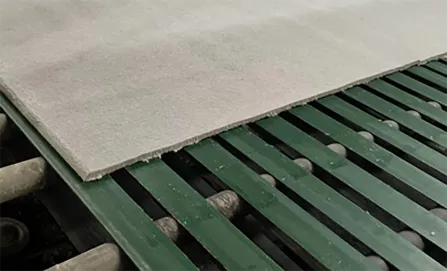8 月 . 14, 2024 00:41 Back to list
Innovative Solutions for Fiberglass Reinforced Plastic Ceiling Grids in Modern Architectural Design
Understanding FRP Ceiling Grids An Innovative Solution for Modern Interiors
FRP (Fiber Reinforced Polymer) ceiling grids are rapidly emerging as a preferred choice in the construction and interior design sectors due to their unique combination of strength, lightweight properties, and aesthetic versatility. As modern architectural styles evolve, the demand for materials that are not only functional but also visually appealing has never been higher. FRP ceiling grids present a compelling solution that meets these requirements.
What is FRP?
Fiber Reinforced Polymer is a composite material made by combining polymer resins with fibers such as glass or carbon. This fusion results in a material that is remarkably strong, resistant to corrosion, and impervious to moisture, which makes it an ideal candidate for a wide range of applications, including ceiling grids.
Advantages of FRP Ceiling Grids
1. Durability One of the most significant advantages of FRP ceiling grids is their durability. Unlike traditional materials like metal or wood, FRP is resistant to rust, rot, and chemical damage. This longevity not only reduces maintenance costs but also extends the lifespan of the ceiling system itself.
2. Lightweight FRP ceiling grids are lightweight, which simplifies installation. This characteristic is particularly beneficial in renovation projects where minimizing the load on existing structures is crucial. The ease of handling also streamlines the construction process, saving both time and labor costs.
3. Aesthetic Flexibility FRP can be manufactured in a wide variety of colors and textures, allowing for significant design flexibility. Architects and interior designers can utilize this material to achieve their desired aesthetic, whether it’s a sleek modern look or a more traditional appearance. The ability to integrate various finishes enables seamless incorporation into diverse design schemes.
frp ceiling grid

4. Moisture Resistance In environments that are prone to humidity, such as bathrooms, kitchens, or commercial spaces, FRP ceiling grids offer superior moisture resistance compared to traditional materials. This property helps in preventing mold and mildew growth, promoting healthier indoor air quality.
5. Cost-Effectiveness Although the initial investment in FRP ceiling grids may be higher than that of traditional materials, the long-term savings should not be overlooked. Due to their durability and low maintenance requirements, FRP systems can translate into lower total lifecycle costs.
Applications of FRP Ceiling Grids
FRP ceiling grids are versatile and can be utilized in a variety of settings. They are particularly popular in commercial spaces such as restaurants, shopping malls, and office buildings where aesthetic appeal and functionality are paramount. Additionally, they are increasingly being integrated into residential projects, especially in areas that require a modern touch or are subject to heightened humidity.
Moreover, FRP ceiling grids are ideal for industrial applications where they can withstand harsh environments, such as chemical processing plants and factories. Their resistance to corrosive substances makes them a reliable choice in these settings.
Conclusion
With the ongoing trend towards sustainable and efficient building practices, FRP ceiling grids present an innovative solution that addresses the needs of modern architecture and design. Their durability, lightweight nature, aesthetic versatility, and resistance to moisture make them an attractive option for a wide range of applications. As more architects and builders become aware of the benefits of FRP technology, it is likely that these ceiling grids will become a staple in the industry, set to revolutionize the way we think about ceiling design and installation. Embracing FRP ceiling grids today means preparing for a future where efficiency and aesthetics go hand in hand.
-
Revolutionizing Interior Design with Ceilings t grid Suspended SystemNewsOct.29,2024
-
Revolutionizing Ceiling Design with ceiling access panel with Gypsum Tile WaterproofNewsOct.29,2024
-
Revolutionizing Interior Design with PVC Gypsum Ceiling: A Comprehensive GuideNewsOct.29,2024
-
Elevating Interior Design with High quality Mineral Fiber Ceiling TilesNewsOct.29,2024
-
Revolutionizing Interior Design with PVC Gypsum Ceiling: A Comprehensive GuideNewsOct.29,2024
-
Elevating Interior Design with High-Quality Mineral Fiber Ceiling Tiles: A Comprehensive GuideNewsOct.29,2024







